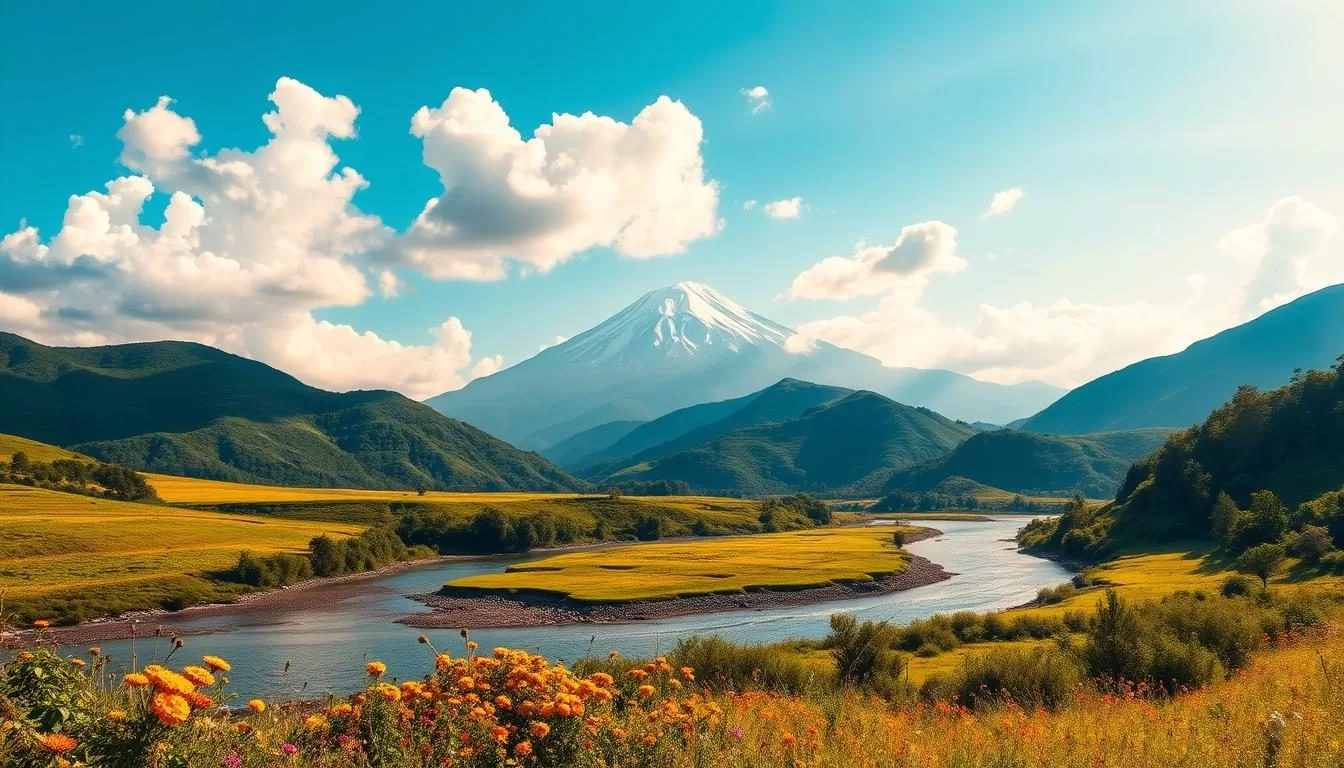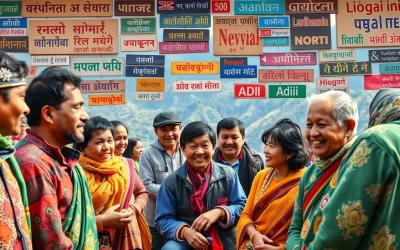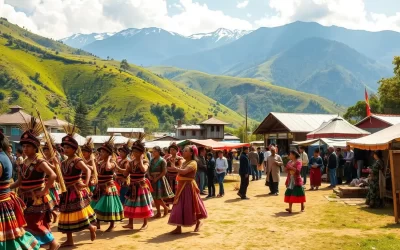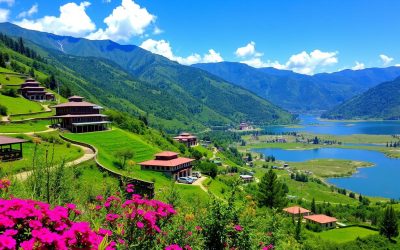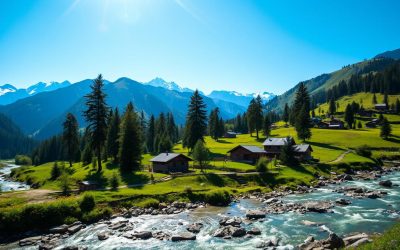✓ Accommodations✓ Flights✓ Rental Cars✓ Tours & Activities
Nestled in the upper Himalayan range, Arunachal Pradesh offers a refreshing escape from the typical Indian heat with its alpine climate and breathtaking landscapes.
Understanding the seasonal variations is crucial for planning your perfect trip to this northeastern gem. The state’s unique geographical position creates microclimates that vary significantly from west to east and across different elevations.
You’ll want to time your visit right to experience snow-capped mountains, lush valleys, or vibrant cultural celebrations. By exploring temperature ranges, rainfall patterns, and regional climate variations, you’ll be able to make informed decisions for your journey.
Whether you’re trekking, viewing wildlife, or immersing yourself in cultural experiences, this guide will help you navigate the distinct weather patterns across Arunachal Pradesh’s diverse regions.
Understanding Arunachal Pradesh’s Unique Climate
Understanding the climate of Arunachal Pradesh is crucial for planning a trip to this breathtaking region. The state’s climate is shaped by its geographical location in the eastern Himalayas.
Geographical Factors Influencing Weather
Arunachal Pradesh’s climate is heavily influenced by its varied topography, ranging from low-lying plains to high mountain peaks exceeding 7,000 meters. This creates distinct microclimates across different regions, with dramatic temperature variations based on altitude.
Temperature Ranges Throughout the Year
The temperature in Arunachal Pradesh typically ranges between 8°C and 35°C, with significant seasonal fluctuations. The region experiences four distinct seasons, and understanding these geographical influences will help you better prepare for your visit.
Winter Season: October to March
Winter, spanning from October to March, is considered the best time to visit Arunachal Pradesh for a memorable trip. The state’s weather during this period is cool and pleasant, making it ideal for sightseeing and exploration.
Temperature and Weather Conditions
During the winter months, Arunachal Pradesh experiences comfortable temperatures, ranging from 15°C to 20°C in lower elevations. However, higher regions like Tawang can drop below freezing, especially at night. The clear skies and crisp air make it perfect for photography and enjoying the mountain views.
Popular Winter Festivals
Winter in Arunachal Pradesh is not just about the weather; it’s also a time for vibrant cultural celebrations. The Pangsau Pass Winter Festival in January and agricultural festivals like Nyokum Yullo and Chalo Loku in February are significant attractions, offering insights into local tribal traditions.
Best Winter Activities and Experiences
You can enjoy a variety of activities during the winter season, including monastery visits in Tawang, wildlife spotting in Namdapha National Park, and exploring the Ziro Valley. The dry and crisp air also makes it an ideal time for trekking in lower and mid-elevation areas.
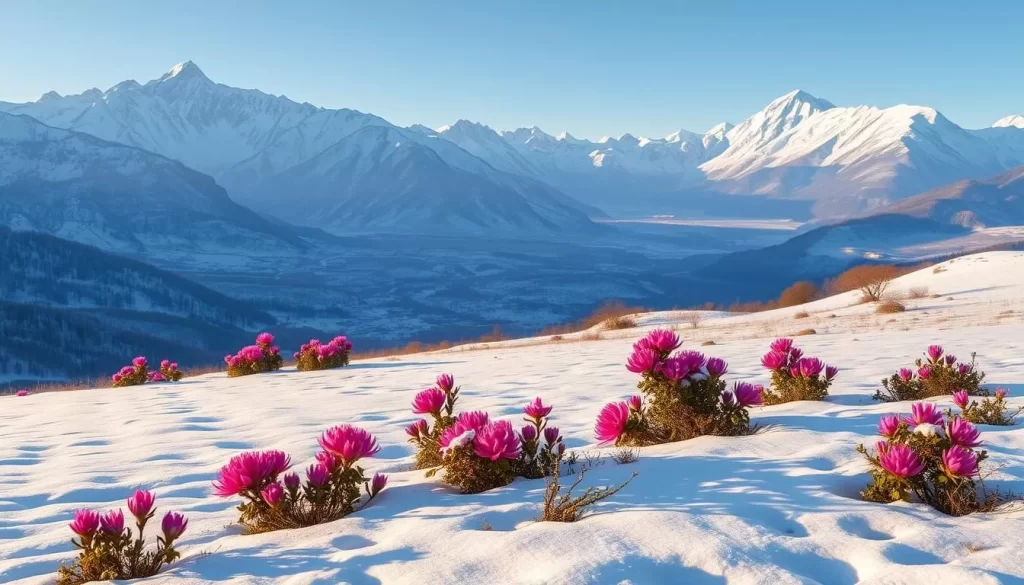
Summer Season: April to June
The summer months in Arunachal Pradesh offer a unique blend of culture, adventure, and natural beauty. As the region transitions from spring to summer, the landscape transforms, offering pleasant weather and a range of activities for visitors.
Temperature and Weather Patterns
During the summer, temperatures in Arunachal Pradesh range from 20°C to 35°C, making it an ideal destination for those seeking to escape harsher climates. The higher elevations remain pleasant, while the lower regions experience warmer conditions. Occasional pre-monsoon showers bring the landscape to life, with rhododendrons and orchids blooming across the hills.
Summer Travel Benefits and Considerations
Summer is considered the off-season for tourism in Arunachal Pradesh, meaning visitors can enjoy fewer crowds and better deals on accommodations and transportation. This season is perfect for wildlife viewing in places like Namdapha National Park, as animals are more active around water sources. Additionally, the comfortable weather allows for exploration of remote monasteries and temples.
Ideal Summer Destinations
Popular destinations during the summer include Tawang, known for its cool climate even in summer, and Ziro Valley, with its lush green terraced fields. The eastern districts, such as Roing, offer exciting waterfall excursions, like the Bap Tenges Kang Waterfall. Adventure seekers can enjoy river rafting on the Siang River during late spring and early summer.
Monsoon Season: July to September
The monsoon season, spanning from July to September, transforms Arunachal Pradesh into a lush paradise. This period is characterized by significant rainfall, with the region receiving between 2,000 to 4,000 mm of precipitation annually.
Rainfall Patterns and Intensity
The rainfall patterns in Arunachal Pradesh vary across different regions during the monsoon season. The foothills tend to receive heavier downpours compared to some of the higher elevation areas. However, sudden changes in weather patterns are common throughout the region.
Travel Challenges During Monsoon
Traveling during the monsoon season presents several challenges, including landslides, road closures, and limited visibility. It is essential to have flexible itineraries and local guidance to navigate these challenges effectively.
Unique Monsoon Experiences and Attractions
Despite the challenges, the monsoon season offers unique experiences such as witnessing waterfalls at their full glory. Nuranang Falls near Tawang and Bap Tenges Kang Waterfall are must-visit attractions during this time. The rain-washed landscapes also provide exceptional photography opportunities.
| Aspect | Monsoon Season (July to September) |
|---|---|
| Rainfall | 2,000 to 4,000 mm |
| Weather Patterns | Sudden changes, heavy showers |
| Travel Challenges | Landslides, road closures, limited visibility |
| Attractions | Nuranang Falls, Bap Tenges Kang Waterfall |
As you plan your trip to Arunachal Pradesh during the monsoon season, be prepared for the challenges and capitalize on the unique experiences that this period offers. The lush landscapes and vibrant natural beauty make it a compelling time to visit.
Arunachal Pradesh, India: Best Months for a Weather-Savvy Trip
To experience Arunachal Pradesh at its best, it’s essential to know when to go for the most favorable weather. The state’s diverse climate means that certain months are more suitable for visiting than others.
November to February: Peak Tourist Season
During November to February, Arunachal Pradesh experiences its peak tourist season. This period offers the most reliable weather conditions, with clear skies and minimal rainfall. You’ll enjoy comfortable daytime temperatures in most regions, although higher elevations like Tawang can be quite cold with occasional snowfall.
March to April: Spring Transition Period
The months of March to April mark a delightful spring transition in Arunachal Pradesh. With moderate temperatures and blooming rhododendrons and magnolias, this shoulder season is ideal for those seeking fewer tourists and pleasant weather. It’s also a great time for birdwatching and experiencing authentic cultural celebrations.
Visiting Arunachal Pradesh during these optimal months allows you to enjoy the state’s diverse attractions without the challenges of extreme weather conditions, making for a best time to trip Arunachal Pradesh.
Regional Weather Variations Across Arunachal Pradesh
As you travel across Arunachal Pradesh, you’ll notice a range of weather patterns due to its vast geographical expanse. The state’s diverse climate is influenced by its location in the North East, creating significant variations across different regions.
Tawang and Western Regions
The western regions, including Tawang and Dirang, experience much colder conditions year-round. Winters are harsh, with temperatures often below freezing and occasional snowfall between December and February. Even in summer, Tawang’s high altitude means cool nighttime temperatures.
Central Arunachal Pradesh
Central Arunachal Pradesh, including areas like Ziro Valley and Daporijo, enjoys more moderate temperatures with less extreme variations. The region experiences distinct seasons but with milder transitions, making it pleasant during spring (March-April) and autumn (October-November).
Eastern Districts and Lowlands
Eastern districts and lowlands, such as Roing and Tezu, have warmer climates with higher humidity, especially during summer. Temperatures can reach 30-34°C during peak summer months, differing significantly from the western areas.
| Region | Summer Temp | Winter Temp |
|---|---|---|
| Tawang and Western | 15-20°C | Below Freezing |
| Central Arunachal | 20-25°C | 10-15°C |
| Eastern Districts | 30-34°C | 15-20°C |
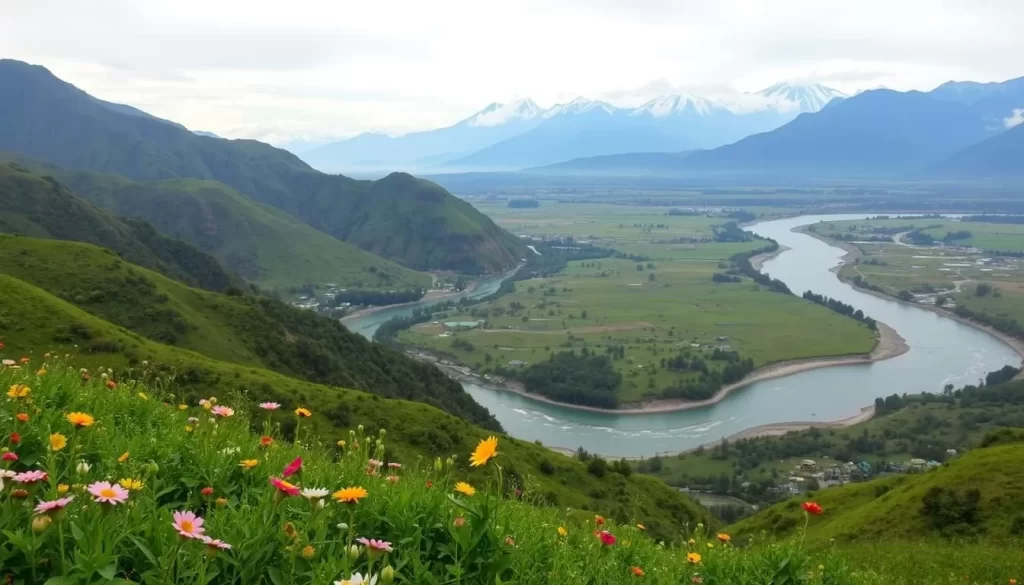
Wildlife Viewing: Optimal Seasons
To spot the region’s diverse fauna, including rare species like the clouded leopard and red panda, you need to plan your visit strategically. Arunachal Pradesh offers excellent wildlife viewing opportunities, particularly in its national parks.
Namdapha National Park Best Visiting Months
Namdapha National Park, India’s third-largest national park, is a prime destination for wildlife enthusiasts. The best time to visit Namdapha National Park is from November to April when dry conditions improve visibility and animal movement. The park typically closes during peak monsoon months (June-September) due to heavy rainfall.
Wildlife Activity Patterns by Season
Different species exhibit unique activity patterns by season. For instance, hornbills are most visible during their breeding season (February-March), while mammals like takin and red panda are more active during cooler months. Early mornings and late afternoons yield the best wildlife sightings, regardless of the season.
Trekking and Outdoor Adventures: Weather Considerations
Trekking in Arunachal Pradesh requires a deep understanding of the weather to ensure a safe and enjoyable experience. The state’s diverse terrain and climate mean that weather conditions can significantly impact the quality and safety of your trekking adventure.
Best Months for Hiking and Trekking
The optimal seasons for trekking in Arunachal Pradesh are from October to November and March to April. During these periods, you can expect clear skies, moderate temperatures, and minimal rainfall, making for ideal trekking conditions. The post-monsoon season (October-November) offers lush landscapes and clear mountain views, while the pre-monsoon season (March-April) brings the added beauty of blooming rhododendrons and other alpine flowers.
Seasonal Trail Conditions and Accessibility
Trail conditions in Arunachal Pradesh vary dramatically with the seasons. Post-monsoon trails may suffer from washouts and landslides, while winter trails at higher elevations can be snow-covered and treacherous. The Bailey Trail, one of Arunachal’s most famous treks, is best attempted in October-November or April-May when the passes are free of snow but the weather remains stable. Accessibility to remote trekking regions like Talley Valley and Namdapha depends heavily on seasonal road conditions, with some areas becoming completely inaccessible during monsoons.
| Season | Trekking Conditions | Accessibility |
|---|---|---|
| October-November | Clear skies, moderate temperatures | Most regions accessible |
| March-April | Blooming flowers, pleasant weather | Generally accessible, some areas may have roadblocks |
| December-February | Snow-covered trails, freezing temperatures | Higher elevations challenging, lower elevations possible with proper gear |
Regardless of the season, hiring local trekking guides is essential as they understand the changing trail conditions and can navigate alternative routes when necessary. This ensures not only your safety but also enhances your overall trekking experience in Arunachal Pradesh.
Cultural Festivals and Weather Timing
Arunachal Pradesh hosts a multitude of cultural festivals that are influenced by the weather. The state’s diverse tribal cultures celebrate various festivals throughout the year, each tied to specific seasonal changes and agricultural cycles.
Winter Festivals: Pangsau Pass, Nyokum Yullo, and Chalo Loku
Winter is a significant season for cultural celebrations in Arunachal Pradesh. The Pangsau Pass Winter Festival in January showcases the cultural heritage of tribes along the Indo-Myanmar border. February brings important agricultural festivals like Nyokum Yullo of the Nyishi tribe and Chalo Loku of the Nocte tribe, celebrating good harvests and praying for future prosperity.
Other Seasonal Cultural Celebrations
Beyond winter, other seasons host unique festivals. The Mopin Festival in April marks the beginning of spring with traditional rituals. The Dree Festival in July coincides with the monsoon season, involving prayers for good crops. Solung, celebrated by the Adi tribe in September, marks the end of the agricultural season.
| Festival | Month | Tribe/Community |
|---|---|---|
| Pangsau Pass Winter Festival | January | Tribes along Indo-Myanmar border |
| Nyokum Yullo | February | Nyishi tribe |
| Chalo Loku | February | Nocte tribe |
| Mopin Festival | April | Galo tribe |
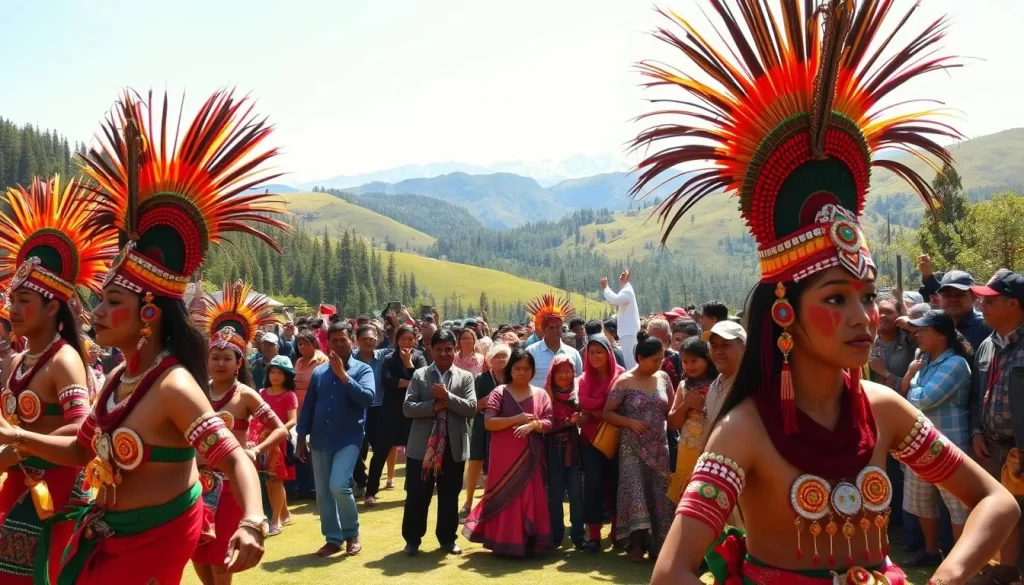
Packing Tips for Different Seasons
To make the most of your Arunachal Pradesh adventure, it’s essential to pack according to the season. The state’s diverse climate means that the right gear can make all the difference in your comfort and enjoyment.
Winter Essentials
For winter visits (October-March), pack thermal layers, a heavy jacket, gloves, a warm hat, thick socks, and sturdy waterproof boots, especially if you’re heading to higher elevations like Tawang. Don’t forget quality sunscreen and sunglasses, as the high-altitude sun can be intense.
Summer Necessities
In summer (April-June), include lightweight, breathable clothing, a light rain jacket, comfortable hiking shoes, and insect repellent. Even in summer, higher elevations can be cool in the mornings and evenings, so a light fleece or jacket is a good idea.
Monsoon Must-Haves
During the monsoon season (July-September), quick-dry clothing, multiple pairs of shoes, high-quality rain gear, waterproof backpack covers, and plastic bags to protect electronics are must-haves.
| Season | Essential Items |
|---|---|
| Winter | Thermal layers, heavy jacket, gloves, warm hat, thick socks, waterproof boots |
| Summer | Lightweight clothing, light rain jacket, hiking shoes, insect repellent |
| Monsoon | Quick-dry clothing, rain gear, waterproof backpack covers, plastic bags |
Regardless of the season, modest clothing for visiting monasteries and tribal villages, along with medical supplies including altitude sickness medication, is recommended. Packing light and being prepared for variable conditions will enhance your travel experience.
Accommodation and Travel Deals by Season
When planning your trip to Arunachal Pradesh, understanding the seasonal accommodation and travel deals can make a significant difference in your overall expenses. The region experiences significant fluctuations in accommodation pricing based on seasonal demand.
Pricing Variations Across Seasons
Accommodation pricing in Arunachal Pradesh varies greatly between peak and off-season rates. During the peak season (November-February), prices are at their highest, especially in popular destinations like Tawang and Ziro.
- Peak season (November-February) sees the highest prices, with bookings often required 2-3 months in advance.
- Summer (April-June) offers discounts of 20-30% compared to peak season rates, making it a budget-friendly time to visit.
- Monsoon season (July-September) provides the lowest prices, though some remote properties may close.
Strategic Booking Recommendations
For the best balance of weather and pricing, consider the shoulder seasons (March or October). Booking recommendations vary by month, with December and January requiring reservations 3-4 months in advance, while April to June bookings can often be made 2-4 weeks ahead.
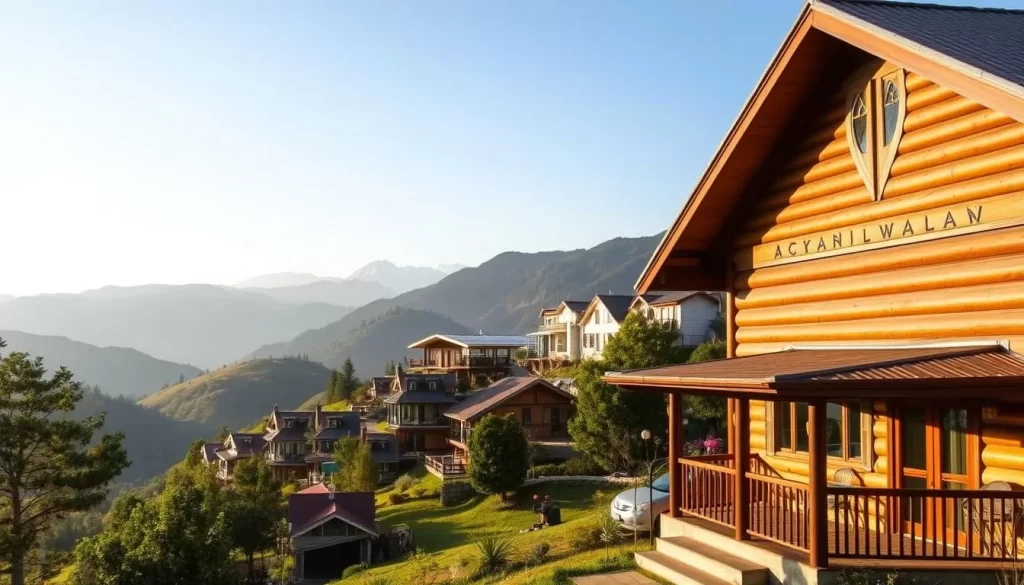
Many accommodations offer package deals including transportation, which is particularly valuable given the challenges of independent travel in the region. Consider working with specialized tour operators for comprehensive packages with reliable transportation and experienced guides.
Conclusion: Planning Your Weather-Perfect Arunachal Pradesh Adventure
To make the most of your visit to Arunachal Pradesh, planning is key. The state’s diverse climate means that the best time to visit depends on your interests and preferences.
For a memorable trip to Arunachal Pradesh, consider the weather patterns. The period from October to March is generally ideal for first-time visitors, offering reliable conditions. If you’re interested in cultural festivals and clear mountain views, November to February is the best time.
Wildlife enthusiasts should target November-December or March-April for optimal viewing conditions. Adventure seekers will find October-November and March-April suitable for trekking, with clear weather and accessible trails.
Consider regional variations within Arunachal Pradesh when planning your itinerary, as weather conditions differ across districts. Organizing your trip through experienced tour operators is recommended due to the region’s remote nature and complex permit requirements.
Approach your journey with flexibility and an adventurous spirit to ensure a memorable experience in this unique corner of India.
The above is subject to change.
Check back often to TRAVEL.COM for the latest travel tips and deals.
